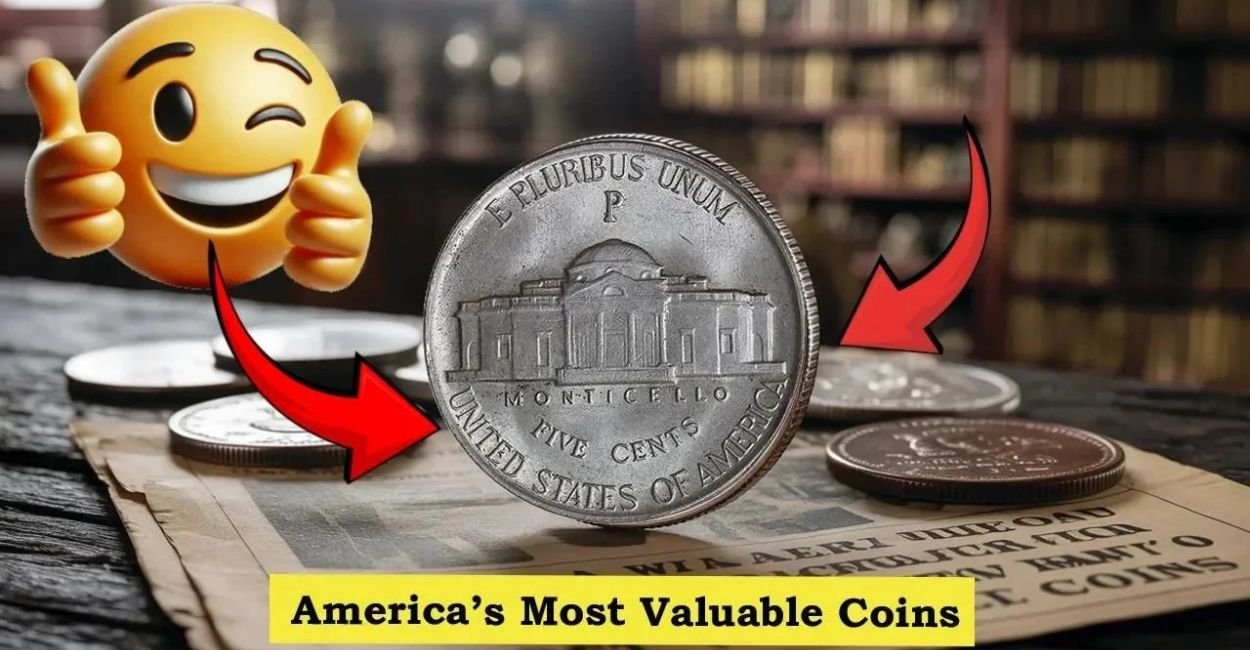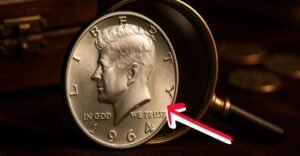Picture this: You’re sorting through a dusty jar of old coins from Grandma’s attic, and one shiny five-cent piece catches your eye. It looks like any other nickel, but this one tells a story of wartime sacrifice and a lucky mix-up that could make it worth thousands of dollars today. Welcome to the world of the War-Era Jefferson Nickel—a tough little coin born in 1938 that’s now a hot item for collectors. During World War II, the U.S. government tweaked its recipe to save precious metals for the war effort, creating versions that stand out from the crowd.
The Jefferson Nickel’s Start: Replacing the Old Buffalo
Before the Jefferson Nickel showed up, folks used the Buffalo Nickel—a rugged coin with a bison and Native American from 1913 to 1938. But wear and tear made it hard to read, so the U.S. Mint needed a fresh face. Enter the Jefferson Nickel in 1938, designed by artist Felix Schlag. It honors Thomas Jefferson, the third U.S. president and writer of the Declaration of Independence.
The front shows Jefferson facing left, with “In God We Trust” above and the year below. His hair flows back, giving a sense of calm smarts. Flip it over, and Monticello—Jefferson’s cool Virginia home—sits in the center, with “Five Cents” and “United States of America” around it. Made from 75% copper and 25% nickel, it was sturdy for everyday buys like candy or bus fares. Billions poured out from mints in Philadelphia (no mark), Denver (“D”), and San Francisco (“S”). It was meant to last, but World War II flipped the script.
A Coin for Everyday Heroes
This nickel wasn’t flashy—it was practical, just like Jefferson’s ideas on freedom and farming. Little did anyone know, a global fight would turn it into a symbol of grit.
Wartime Twist: Why the Metal Makeup Changed
World War II kicked off in 1939, and by 1942, America was all-in. Nickel, that shiny metal in the coins, was key for tanks, guns, and planes. To free it up for the troops, the government told the Mint to switch recipes. Starting late 1942 through 1945, Jefferson Nickels got a new blend: 56% copper, 35% silver, and 9% manganese. This mix gave them a duller, grayer look but kept them tough.
These “War Nickels” saved tons of nickel—enough for thousands of fighter parts. Production ramped up, but the change wasn’t forever. Once peace hit in 1945, they switched back. About 870 million War Nickels were made, but their silver touch makes them special today. The manganese dulled over time, so finding a shiny one? That’s collector gold.
Saving the Day, One Coin at a Time
This shift wasn’t just about metal—it was a team effort from home, showing how even small things like nickels fueled victory.
Easy Ways to Identify Your War Nickel
Spotting a War Nickel is straightforward—no fancy tools needed. The big clue? A giant mint mark right above Monticello on the back. Philadelphia got its first-ever “P” mark (a bold one, not the tiny later versions), while Denver (“D”) and San Francisco (“S”) stayed the same spot but bigger. No mark? It’s pre-war.
Weigh it: War versions tip at 5.0 grams (thanks to silver), lighter than the old 5.2 grams. Edge check: A faint silver streak peeks through the copper-nickel layers. Date range? 1942-1945, with the last few months of ’42 being the switch point—those are the scarcest. Circulated ones show wear, but uncirculated beauties gleam like new.
Quick Spotter’s Tips in Bullets
- Date Scan: 1942 (late) to 1945 only.
- Mark Magic: Huge “P,” “D,” or “S” over the house.
- Color Clue: Grayer tone from manganese.
- Weight Trick: About 5 grams—grab a kitchen scale.
- Shine Hunt: No heavy scratches for top value.
These steps turn guesswork into gold hunting.
The Star Error: The 1943 Copper-Nickel Flub Worth a Fortune
Among War Nickels, the 1943 version steals the show. Most were silver-manganese, but a tiny goof happened: A few leftover copper-nickel planchets (blank discs) slipped into the presses at Philadelphia and San Francisco. Machines stamped them anyway, creating maybe 20-30 “error” nickels that look like pre-war ones—shiny copper hue, no big mark.
These rarities weigh 5.2 grams and resist tarnish. Spot one? It doesn’t match the wartime gray. Auction fever hit when a 1943 Philadelphia error sold for $1.7 million in 2006, but everyday finds fetch $10,000-$100,000 in good shape. Why so hot? Pure scarcity—most got spent or melted unaware. In 2025, with coin apps booming, these errors are the ultimate “what if” thrill.
From Mistake to Masterpiece
One wrong blank, one big win—proving even slip-ups from 80 years ago echo today.
How Much Is Your War Nickel Worth? A Value Guide
Value hinges on condition, mint, and quirks. A beat-up 1942-P War Nickel? Maybe $1-2. Pristine uncirculated? $10-50. Silver melt value alone adds a buck or two. Errors like the 1943? Skyrocket to thousands.
Here’s a clear table of average 2025 values (for decent condition; pros grade for peaks):
| Type/Mint | Composition | Circulated Value | Uncirculated Value | Error Potential |
|---|---|---|---|---|
| 1942-P (Early) | Copper-Nickel (Pre-War) | Face Value | $1-$5 | N/A |
| 1942-45 P/D/S (War) | Silver-Manganese | $0.50-$3 | $5-$25 | $100+ |
| 1943 Philadelphia Error | Copper-Nickel (Oops) | $5,000+ | $50,000+ | Up to $1.7M |
| 1945-S (Late War) | Silver-Manganese | $1-$5 | $10-$50 | $200+ |
These show the range—condition is key.
Hunting and Collecting: Tips for Newbies
Start easy: Grab $10 in nickels from your bank (that’s $200 face value). Sort by date and mark. Store in soft albums to dodge scratches. For suspects, snap photos and use free apps like PCGS CoinFacts. Grade big ones with experts ($20-50 fee)—their stamp ups resale. Sell via eBay for quick cash or big auctions for highs. Join local clubs for fun swaps. Remember: Most are modest, but the story’s the real win.
Conclusion: Unearth Your WWII Nickel Legacy Today
The War-Era Jefferson Nickel, from its 1938 roots to wartime silver swaps, isn’t just change—it’s a badge of resilience, blending Jefferson’s wisdom with America’s fight. With easy ID tricks, value tables, and error tales like the $1.7 million 1943 flub, it invites us to dig deeper into history’s pockets. In 2025’s collector rush, one overlooked five-cent piece could link you to victory gardens and V-J Day cheers. So, raid those jars, learn the marks, and chase the spark—who says everyday metal can’t mint memories? Your wartime wonder might be waiting.
Frequently Asked Questions (FAQ)
Why did the Jefferson Nickel change during World War II?
To save nickel for weapons and gear, the Mint used a silver-copper-manganese mix from 1942-1945, freeing up metal for the war machine.
How do I know if I have a War Nickel?
Check for a big mint mark (“P,” “D,” or “S”) above Monticello and dates 1942-1945—plus that lighter, grayer feel.
Are all War Nickels super valuable?
No, most are worth a bit over face value ($1-5), but uncirculated or error ones climb to $25-$100,000 based on shine and rarity.
What’s the big deal with the 1943 error nickel?
It was mistakenly made from old copper-nickel blanks during the silver era—super rare, with just a handful known, leading to million-dollar sales.
Where can I get my nickel checked for value?
Take it to a coin shop or grade via PCGS/NGC online—free prelim looks, or $20-50 for official stamps to sell big.




